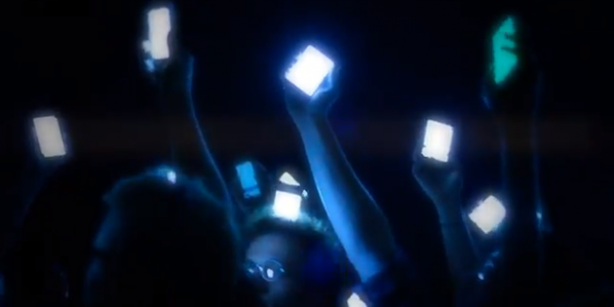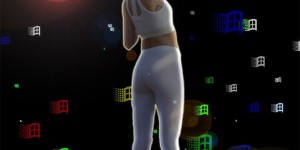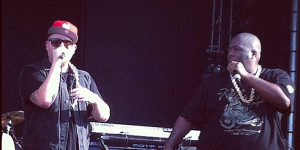 Tech
Tech
TRENDSPOTTING: There's an app for that album
by Richard Trapunski
September 6, 2012
From Dan Deacon’s live show app trailer
There was a time, not too long ago, when concerts were considered an “unmediated” experience. Tape recorders were banned, audience members could only communicate with people in their direct vicinity, and the only people with cameras of any quality were professional photographers. Then phones became “smart,” ushering in the era of blurry Instagram photos, play-by-play Twitter broadcasts and immediately uploaded fan-shot YouTube clips.
The halcyon days of “you had to be there, man” are over, but many old-school musicians have refused to let that nostalgic ideal rest. Last year, classic rock-minded guitar god Jack White prohibited the use of Facebook and Twitter at his shows (as if anyone has the ability to do so), telling The Guardian: “the worst thing is to watch a young kid watching a show on their camera screen instead of watching it on stage. You just want to take it out of his hand and go, ‘come on man, that’s not what this is about.’”
White certainly isn’t saying anything unfamiliar—similar sentiments have been echoed by everyone from Iron Maiden to Tool—but it represents a remember-the-good-old-days-of-rock mentality that’s by its nature resistant to technology and innovation. His assertion, that the mediation of gadgetry is “not what this is about,” suggests that live music is actually “about” something, namely presence, immersion, engagement, a distinctly “live” perspective that you can’t get from listening to records. But what if technology actually helps, not hinders, that ideal? For musicians interested in looking forward, not backward, this is a vital question.
Modern electro-acoustic composer Dan Deacon has always been interested in issues of audience participation and blurring the lines between performer and spectator. Often choosing the floor instead of the stage and leading the crowd in kindergarten-friendly games, contests and choreography, Deacon’s shows are anything but passive. Yet for his upcoming America tour, the performer has decided to harness the technology that the traditionalists continue to claim is pulling spectators out of the live music experience. He’s created an iPhone app.
Created specifically for use at his shows, the app turns audience members’ phones into a source of synchronized light and sound that changes depending on their location within the venue. In a nutshell, rather than distracting them from the performance, it allows people to directly participate in it. “The goal is to change things from, ‘I’m looking at a stage and the sound is coming at me,’ to, ‘I’m looking around me and the sound and light are engulfing me,’ Deacon tells Spin.
For all the handwringing about distraction and mediation, precious few artists have decided to explore the possibilities of this new, increasingly ubiquitous medium. Just as a few artists are discovering the potential of non-traditional distribution to think outside of the long-entrenched but no longer necessary musical norms, some are discovering the infinite implications of their fans carrying sophisticated computers in their pockets. When nearly everyone in the room has access to a GPS, camcorder, and social network, it seems almost stupid not to take advantage.
Some developers have begun to catch on, inserting live Twitter and Instagram feeds into festival apps, letting fans build word-of-mouth on their own terms. Some artists, like the Weeknd, have built upon the Beastie Boys’ slightly pre-iPhone crowdsourcing experiments to create tapestries of unique, within-the-stands experiences. But for the most part, innovation has mostly occurred outside of the live arena.
Many staunch traditionalists have displayed towards MP3s attitudes similar to Jack White’s on the live experience: it’s impersonal, low quality and lacks the locked-in immersion of past formats like vinyl. But, again, the potential is there to harness it to create a more personal, immersive experience. Washington, D.C. band Bluebrain, for instance, created an album called The National Mall, which only works for the location it was made, the National Mall in Washington. As you walk around and approach different landmarks, different sounds are activated to accompany them.
Or take Bjork’s recent release, Biophilia, specifically formatted for iPads. The first ever album-length app, Biophilia relies upon the listener to “activate” and participate in the listening experience by interacting with the music on an audio-visual tactile level. The app’s developer, Scott Snibbe, has already been approached by Passion Pit to create a similar app, that lets the user deconstruct and reconstruct the band’s song, and he remains optimistic about technology’s ability to push music forward.
“What always blew my mind about software is that you are only limited by your own imagination and ability,” he says. “There’s no hard limit to what you can achieve with pure software, in contrast to the physical world where you need materials, equipment, permits, and so on.”
Musicians would be wise to take his advice to heart, and it seems a few already are. Recently, Lady Gaga announced her next album, ARTPOP, will be a “multimedia experience” available in many formats, including a downloadable app that she can continually update, even after fans have acquired it. Considering the album doesn’t come out until 2013, details are still relatively scarce, but it does signify one thing: if one of pop’s biggest stars is dabbling in interactivity via personal devices, it’s only a matter of time before others follow suit.
Tags: Tech, News, dan deacon, iPad, lady gaga, technology





